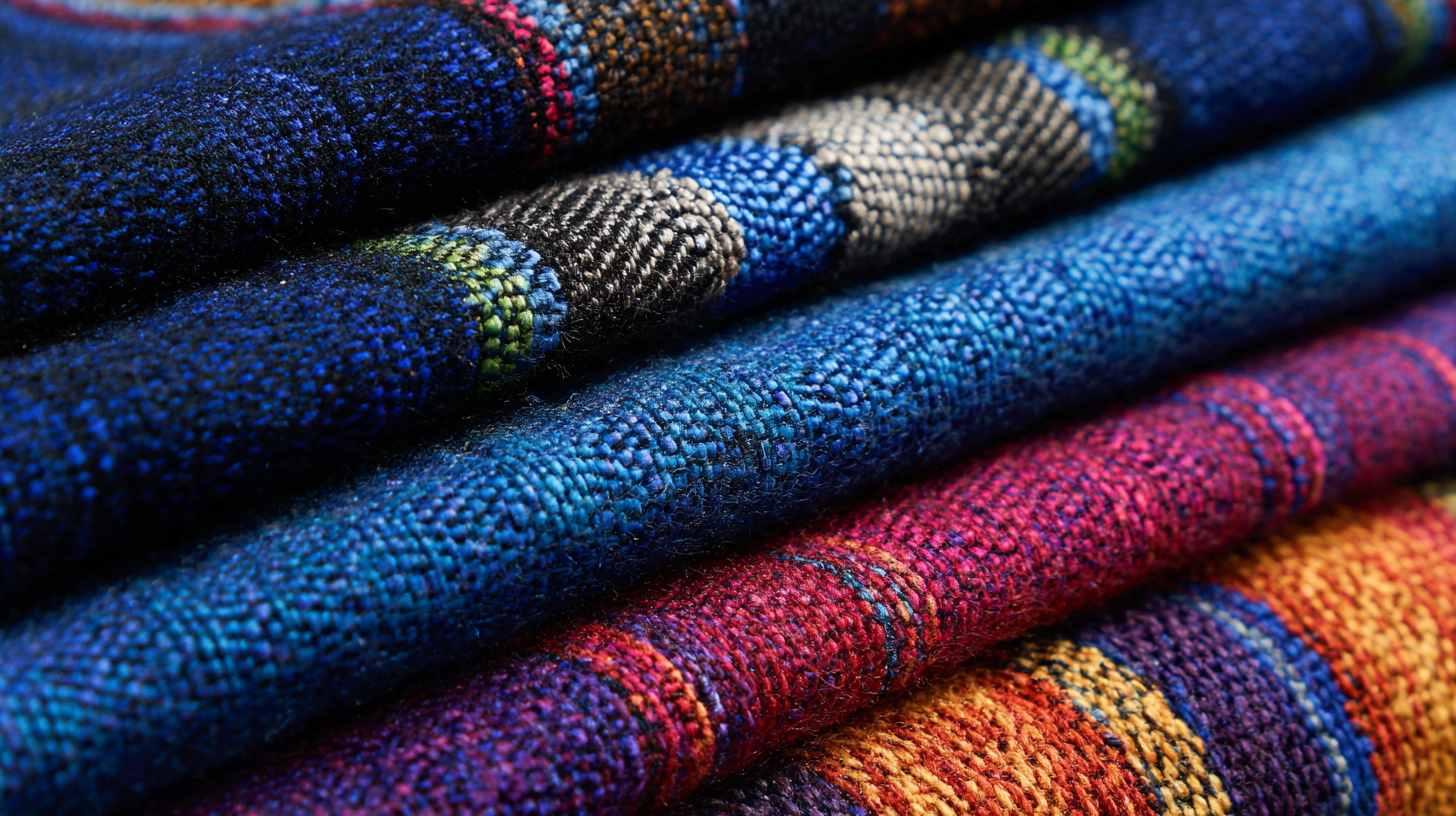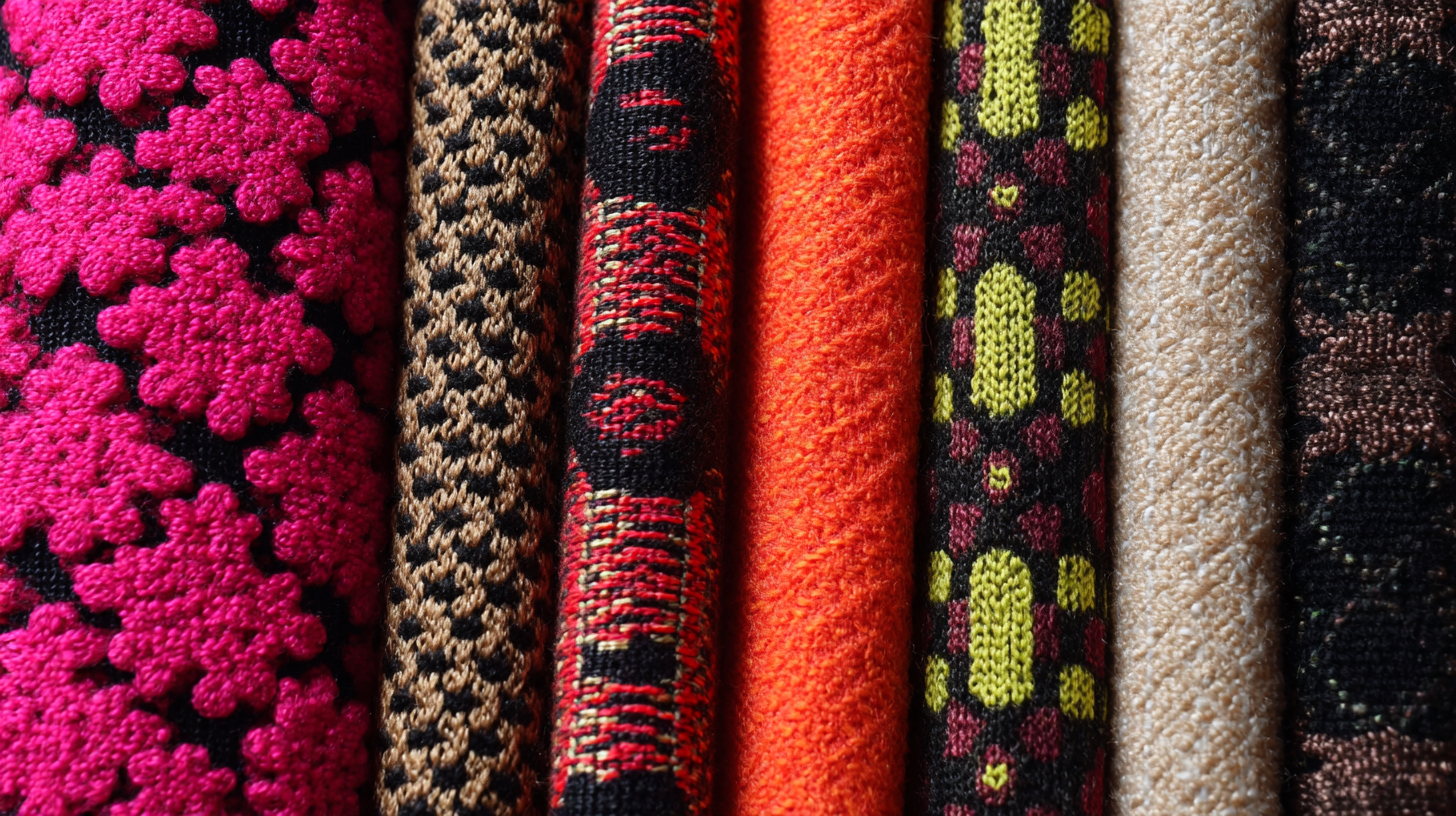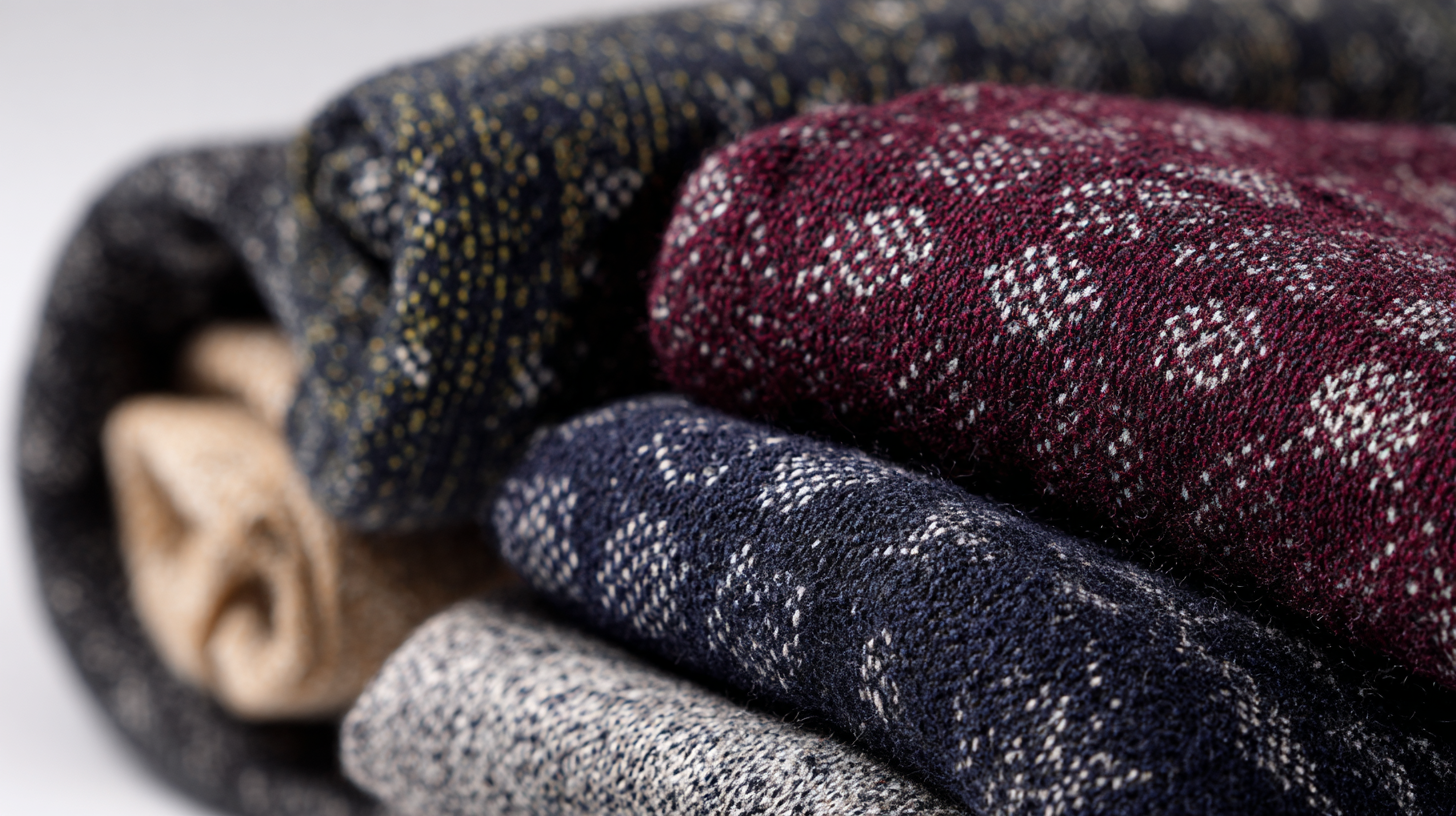As we approach 2025, the textile industry is on the cusp of significant transformation, particularly in the realm of Knitted Jacquard Fabric. This innovative fabric, known for its intricate patterns and versatility, is set to play a crucial role in the evolving market landscape.

According to a recent report by market research firm Textile Research Journal, the global demand for knitted fabrics is projected to grow by 8.5% annually, driven by the increasing preference for sustainable and high-performance materials. Experts emphasize that advancements in digital knitting technologies and eco-friendly production methods will not only enhance design capabilities but also align with consumer demands for sustainability.
As we explore these future trends and expert insights, it becomes imperative for industry stakeholders to adapt their strategies to harness the full potential of Knitted Jacquard Fabric and meet the changing needs of the market by 2025.
The market for knitted jacquard fabric is poised for significant transformation by 2025, influenced by evolving consumer preferences and advancements in textile technology. As eco-consciousness continues to grow, manufacturers are expected to pivot towards sustainable materials, integrating organic fibers and recycled textiles into their offerings. This shift will not only cater to the demands of environmentally aware consumers but also enhance the industry's overall sustainability profile.
In addition to sustainability, the rise of digital printing technologies is likely to revolutionize the design process for knitted jacquard fabrics. Designers will increasingly leverage these innovations to produce intricate patterns with minimal waste, allowing for greater creative expression and customization in the fabric market. Furthermore, as the demand for personalized and unique textiles grows, brands that can adapt to these technological changes will find themselves at the forefront of the industry, offering products that resonate with modern consumers.
The future of knitted Jacquard fabric production is heavily influenced by key innovations in sustainable materials. As consumers increasingly demand eco-friendly options, manufacturers are pivoting towards organic fibers and recycled yarns. These materials not only reduce environmental impact but also enhance the aesthetic appeal of Jacquard fabrics through unique textures and patterns. Innovations like biodegradable blends and the use of natural dyes are paving the way for a more responsible production process, ensuring that sustainability and fashion can coexist harmoniously.

Tip: Explore local suppliers who offer sustainable materials to reduce your carbon footprint. By sourcing locally, you can also support regional economies while accessing unique textile options that stand out in the market.
Moreover, advancements in technology, such as digital knitting machines, are making it easier to produce intricate Jacquard designs with minimal waste. This shift allows for greater customization in production runs, making it easier for brands to meet consumer needs without overproducing. Embracing these technologies can lead to significant cost savings and environmentally friendly practices.
Tip: Invest in up-to-date technology and train your team on new production methods. Staying ahead of technological trends will enable your fabric production to become more efficient and sustainable.
The landscape of jacquard fabric is evolving rapidly, fueled by advanced technology that enhances both design and production processes. According to a report by Grand View Research, the global smart textiles market is expected to reach USD 6.3 billion by 2025, reflecting a significant shift towards integrating technology into textile manufacturing. This growth is largely driven by innovations such as digital weaving techniques and automated production lines, which not only optimize efficiency but also offer designers unprecedented creative flexibility.
Furthermore, experts highlight that the incorporation of artificial intelligence (AI) into jacquard design is set to revolutionize the industry. AI can analyze trends and consumer preferences, allowing for more personalized and responsive fabric designs. A study from McKinsey indicates that companies utilizing AI can see productivity improvements of up to 30%. As manufacturers adapt to these emerging technologies, the capability to produce intricate patterns and custom designs will become more accessible, paving the way for a new era of jacquard fabrics that blend artistry with technological prowess, ensuring relevance in a competitive market.

As we move toward 2025, consumer preferences are set to redefine the landscape of knitted jacquard fabrics. Today's consumers are more conscious than ever about sustainability, durability, and uniqueness in their textile choices. This shift is driving manufacturers to innovate and incorporate eco-friendly materials, resulting in fabrics that not only boast intricate designs but also minimal environmental impact. The emphasis on sustainable practices is reshaping how jacquard fabrics are produced, ensuring they meet the ethical standards expected by the modern consumer.
Moreover, the rise of customization is influencing trends in knitted jacquard. Consumers are seeking personalized products that reflect their individual style, prompting brands to offer bespoke designs and flexible ordering options. This desire for uniqueness is leading to the emergence of smaller, niche brands that focus on limited-edition collections and tailored items. As a result, established companies are also adapting by integrating technology that allows for on-demand printing and design, making it easier to cater to specific customer tastes while minimizing waste.
Therefore, the future of knitted jacquard fabrics lies in understanding and responding to the evolving demands of consumers, paving the way for a more innovative and sustainable textile market.
The landscape of Jacquard fabric is rapidly evolving, driven by technological advancements and changing consumer preferences. Brands looking to stay relevant in this competitive market must adopt proactive strategies to adapt. One effective approach is to invest in sustainable materials and practices. By using eco-friendly fibers and promoting ethical manufacturing processes, brands can appeal to the growing demographic of environmentally-conscious consumers.
Another crucial strategy involves leveraging technology in design and production. The rise of digital weaving machines allows for intricate designs and customization at a scale previously unattainable. Brands should explore partnerships with tech-savvy firms to enhance their capabilities. These collaborations can lead to innovative products that meet consumer demands for uniqueness and personalization.
**Tips for Brands:**
1. **Focus on Trends:** Stay updated with emerging trends in colors, textures, and patterns that resonate with your target audience. Regularly conduct market research to gauge consumer preferences.
2. **Embrace Innovation:** Experiment with smart fabrics that incorporate technology, such as temperature control or moisture-wicking properties, to differentiate your products in the marketplace.
3. **Educate Consumers:** Transparently communicate the benefits of your Jacquard fabrics, including their sustainability credentials and innovative features, to build trust and foster brand loyalty.
| Trend | Impact on Supply Chain | Consumer Preference | Sustainability Factor | Adaptation Strategies |
|---|---|---|---|---|
| Digital Printing Integration | Streamlines production; reduces waste | High demand for customization | Lower environmental impact | Invest in digital technology |
| Smart Textiles | New logistics required for tech integration | Growing interest in functionality | Focus on recyclable materials | Collaborate with tech developers |
| Sustainable Materials | Requires adaptation of sourcing channels | Preference for eco-friendly options | Crucial for brand loyalty | Shift to sustainable suppliers |
| Customization and Personalization | Need for agile manufacturing systems | Desire for unique, tailored products | Potential for upcycling | Develop on-demand services |
| Enhanced Durability | Impacts material selection processes | Demand for long-lasting products | Increases product lifespan | Invest in R&D for better materials |